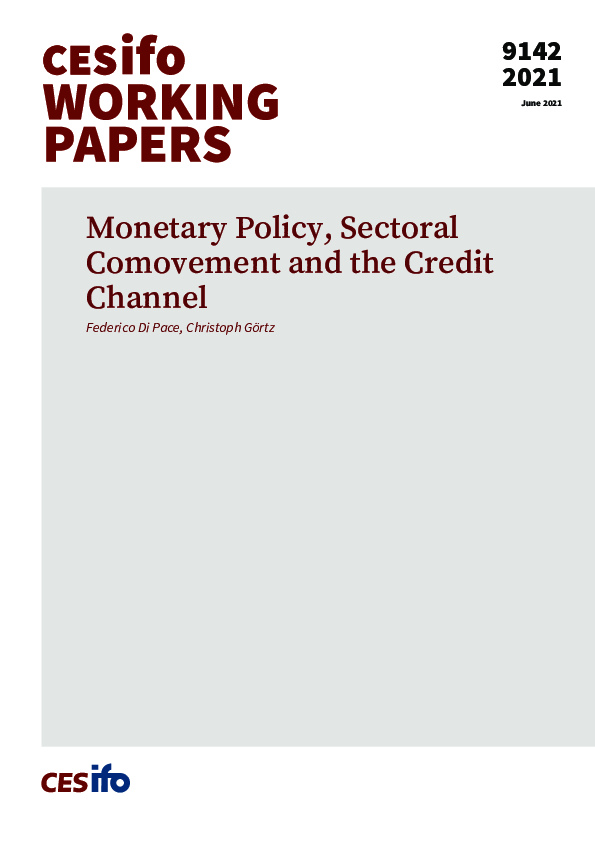Monetary Policy, Sectoral Comovement and the Credit Channel
CESifo, Munich, 2021
CESifo Working Paper No. 9142

Using a structural vector autoregression, we document that a contractionary monetary policy shock triggers a decline in durable and non-durable outputs as well as a contraction in bank equity and a rise in the excess bond premium. The latter points to an important transmission channel of monetary policy via financial markets. It has long been recognized that a standard two-sector New Keynesian model, where durable goods prices are flexible and prices of non-durables and services sticky, does not generate the empirically observed sectoral co-movement across expenditure categories in response to a monetary policy shock. We show that introducing frictions in financial markets in a two-sector New Keynesian model can resolve its disconnect with the empirical evidence: a monetary tightening generates not only co-movement, but also a rise in credit spreads and a deterioration in bank equity.
Fiscal Policy, Macroeconomics and Growth
Monetary Policy and International Finance